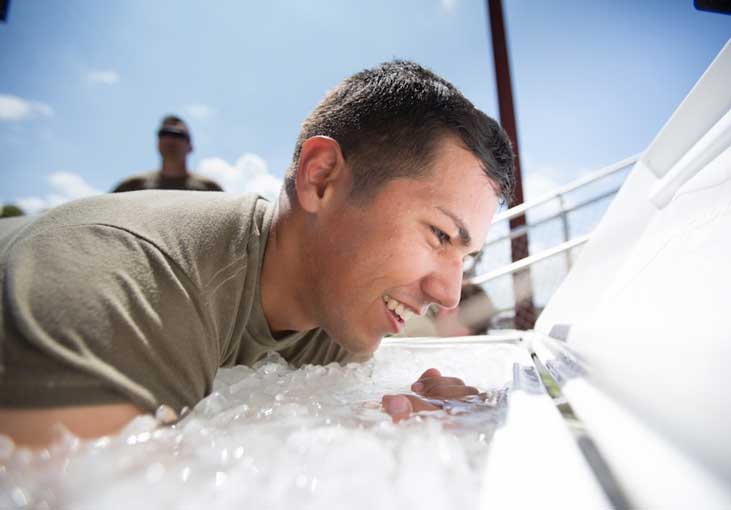Article title
Impact of arm immersion cooling during Ranger training on exertional heat illness and treatment costs
Abstract
Ranger training includes strenuous physical activities and despite heat mitigations strategies, numerous cases of serious exertional heat illness (EHI) occur. We developed an Arm Immersion Cooling (AIC) system that is not logistically burdensome and may be easily employed in training environments. Purpose: To examine the effect of AIC on EHI incidence, severity, and treatment costs during Ranger School. Methods: The training program was standardized for physical exertion and heat stress factors throughout the study period. AIC was employed summer months of 2010–2012 (n = 3,930 Soldiers) and Control (CON; n = 6,650 Soldiers) data were obtained for summer months of 2007–2009. Descriptive characteristics of all EHI casualties were obtained, including hospitalization status (treated and released [Treat], evacuated [Evac] or admitted [Admit] to the hospital), which served as proxy indicator of illness/injury severity. Medical cost savings were calculated from hospital records. Results: Incidence rates were not different (CON 4.06 vs. AIC 4.00/1,000 person-days). Treat increased during AIC (18.43 vs. 4.84/1,000 person-days) accompanied by marked but non-significant decreases in Evac and Admit rates. AIC use was associated with a medical cost savings of $1,719 per casualty. Conclusions: AIC implementation during strenuous physical training in summer months can reduce EHI severity and associated medical treatment costs.
Description
The full text of this 2015 article in Military Medicine is available online at:
